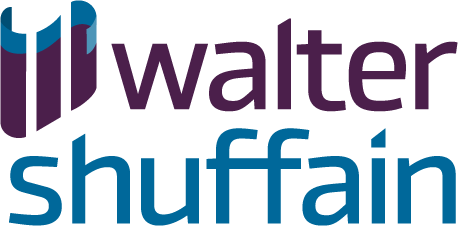Written by: David Cooper, Joseph Bellante, and Mark Trunfio
Many high-net-worth individuals are unaware of an incredibly valuable tax incentive: Section 1202 of the Internal Revenue Code, also known as the qualified small business stock gain exclusion.
This tax-planning tool allows investors to sell appreciated stock and exclude part or all of the gain from taxation.
What is qualified small business stock (QSBS)?
It is important to note that not all small business stock qualifies for the exclusion. You must meet specific requirements at both the corporate and shareholder level.
Corporate-level requirements include:
- The issuer must be a domestic C corporation or an LLC that elects to be taxed as a C corporation (S corporation stock is not eligible)
- The corporation’s aggregate gross assets (cash, the aggregate adjusted basis of non-cash assets and amounts received by the corporation in the stock issuance) must be always $50 million or less from August 11, 1993, until the stock is issued.
- The corporation must be an active trade or business, which includes startup, research & experimental activities in connection with a future business (not a holding company)
- The corporation must be a qualified business. This means businesses other than ones involving specified personal or financial services, banking, insurance, financing, leasing, investing, farming, mining, or operating a hotel, motel, or restaurant. Qualifying businesses include manufacturing, retail, technology, and wholesaling.
Shareholder-level requirements include:
- The shareholder must be a taxpayer other than a C Corporation
- The shareholder must hold the stock for more than five years before selling it
- The taxpayer must acquire original issuance stock from the corporation after August 10, 1993, by purchase or as compensation for services.
What is the QSBS exclusion worth?
Assuming the taxpayer meets the five-year holding period, active business requirement, and other criteria, Section 1202 allows them to sell the stock and exclude part or all of the gain from income tax (including the 3.8% net Investment Income Tax) depending on the issue date:
| From August 11, 1993, through February 17, 2009 | 50% |
| From February 18, 2009, through September 27, 2010 | 75% |
| On or after September 28, 2010 | 100% |
Note that an Alternative Minimum Tax adjustment equal to 7% of the excluded gain applies to stock issued before September 28, 2010. In addition, for stock issued prior to September 28, 2010 a portion of the taxable gain will be taxable at 28%.
The gain is treated like any other capital gain if the requirements aren’t met. Long-term capital gains-those on investments held for more than one year-are taxed up to 20% and subject to the 3.8% net Investment Income Tax. Assets held for one year or less are taxed at the taxpayer’s ordinary income tax rate.
The excludable gain is capped at the greater of $10 million or ten times the adjusted tax basis of the investment. The $10 million dollar limit is reduced by the aggregate amount taking into account in prior years. In addition, the limit is determined by reference to each issuing corporation
For example, taxpayer A purchased stock in Corporation B on December 1, 2010, in exchange for $1 million in cash. On December 1, 2022, Taxpayer A sold the stock for $11 million, realizing a $10 million gain. Assuming Taxpayer A and Corporation B meet the Section 1202 requirements, Taxpayer A could exclude 100% of their $10 million gain.
Without the QSBS exclusion, Taxpayer A would have paid 23.8% on the gain, so applying the exclusion provides tax savings of $2,380,000.
State QSB stock tax benefits
Each state has rules for taxing gains on QSBS at the state level. States generally handle the QSBS exemption in one of three ways:
- Follow the federal QSBS treatment if the stock meets the Section 1202 criteria.
- Partially follow federal QSBS treatment but provide additional criteria beyond the federal guidelines.
- Do not permit any capital gains exclusions for qualified small business stock.
Massachusetts takes the second route providing for a 50% exclusion; in addition, capital gains from the sale of QSB stock may be taxed at a lower rate, if certain Massachusetts statutory provisions are met.
- The business must be a Massachusetts domiciled C or S Corporation incorporated on or after January 1, 2011
- The stock’s acquisition date must have been within five years of the business incorporation
- The holding period is three years instead of five years
If the company and the shareholder meet the requirements, the capital gains are taxed at a rate of 3% instead of Massachusetts’ standard long-term capital gains tax rate of 5%.
Complying with the Section 1202 requirements is complex. Taking the wrong action – like selling the stock before the five-year holding period is up, failing to maintain the right records, or transferring the stock to a partnership – can result in losing out on the anticipated benefits. Whether you’re considering investing in a qualified small business or transferring or selling stock, contact your Walter & Shuffain advisor for help maximizing your qualified small business stock benefits.
